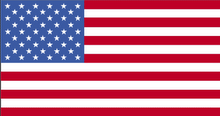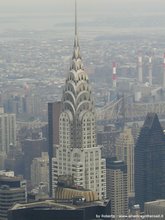 The stately Jamaica manor of Rufus King, who helped frame the U.S. Constitution and voiced fiery, ahead-of-his-time appeals against slavery, ranks far down the list of the city's favored tourist sites.
The stately Jamaica manor of Rufus King, who helped frame the U.S. Constitution and voiced fiery, ahead-of-his-time appeals against slavery, ranks far down the list of the city's favored tourist sites.
His role in shaping the fledgling nation likely fell into obscurity because he never ascended to the presidency - and few historians explored his accomplishments in crucial yet unsung roles as senator and ambassador to Great Britain.
But a researcher who is combing through King's 2,200-title library - among the most extensive in early America - hopes findings about books he read and notes he took may someday vault him into the national spotlight.
"Right now, Rufus King would be considered a second-tier founding father," admitted David Gary, 31, who is exploring King's volumes for his doctoral dissertation. "My research is trying to make him a first-tier."
Gary, whose first job in 2002 included leading tours of King's Georgian estate at 151st St. and Jamaica Ave., has leafed through just parts of the statesman's mix of mostly law and travel tomes.
And yet, only months into his two-year project, Gary has uncovered pamphlets and newspaper clippings that document - for the first time - exactly how King studied to craft his unprecedented argument in 1820 that slavery was illegal.
Gary hopes that painting a fuller picture of King's vision to halt the spread of slavery - four decades before Abraham Lincoln was elected President - will foster greater public appreciation for King's place in history.
"He doesn't have a movie made about him or a documentary," said Kathy Forrestal, the education director at King Manor Museum. "His name isn't on Ken Burns' lips, but we think he should be."
King opposed slavery from the inception of his political career, helping pass the Northwest Ordinance of 1787 that prohibited enslavement in a chunk of territory newly adopted by the Union.
During a Senate debate in 1820 that led to the Missouri Compromise, which admitted Missouri as a slave state and Maine as free, King boldly declared slavery was "contrary to the law of nature."
Beyond the rhetoric, though, little depth has accompanied accounts of King's anti-slavery stances. That's why Gary thinks it's valuable to know, for example, that King read natural-law advocates who asserted everyone is born free.
At the New-York Historical Society, where many of King's books were donated, Gary also discovered King had clipped a newspaper article that slammed Thomas Jefferson, author of the Declaration of Independence, for owning slaves.
"It's a small thing, but it shows King's personal thoughts on the matter that we didn't know before," Gary said, adding he wants to raise King's profile to the level of Jefferson and John Adams.
Skeptics doubted Gary's research would immediately captivate the public and elevate King.
"It's not going to make the network news, but it's something scholars will take seriously," said Jeremy Dibbell of the Massachusetts Historical Society.
But King Manor Museum caretaker Roy Fox figured King, who died in 1827 and is buried blocks from his home at Grace Episcopal Church, will soon get his due.
"I get the feeling we're just getting started," Fox said. "There's a gem in history here to be polished and brought out."




























